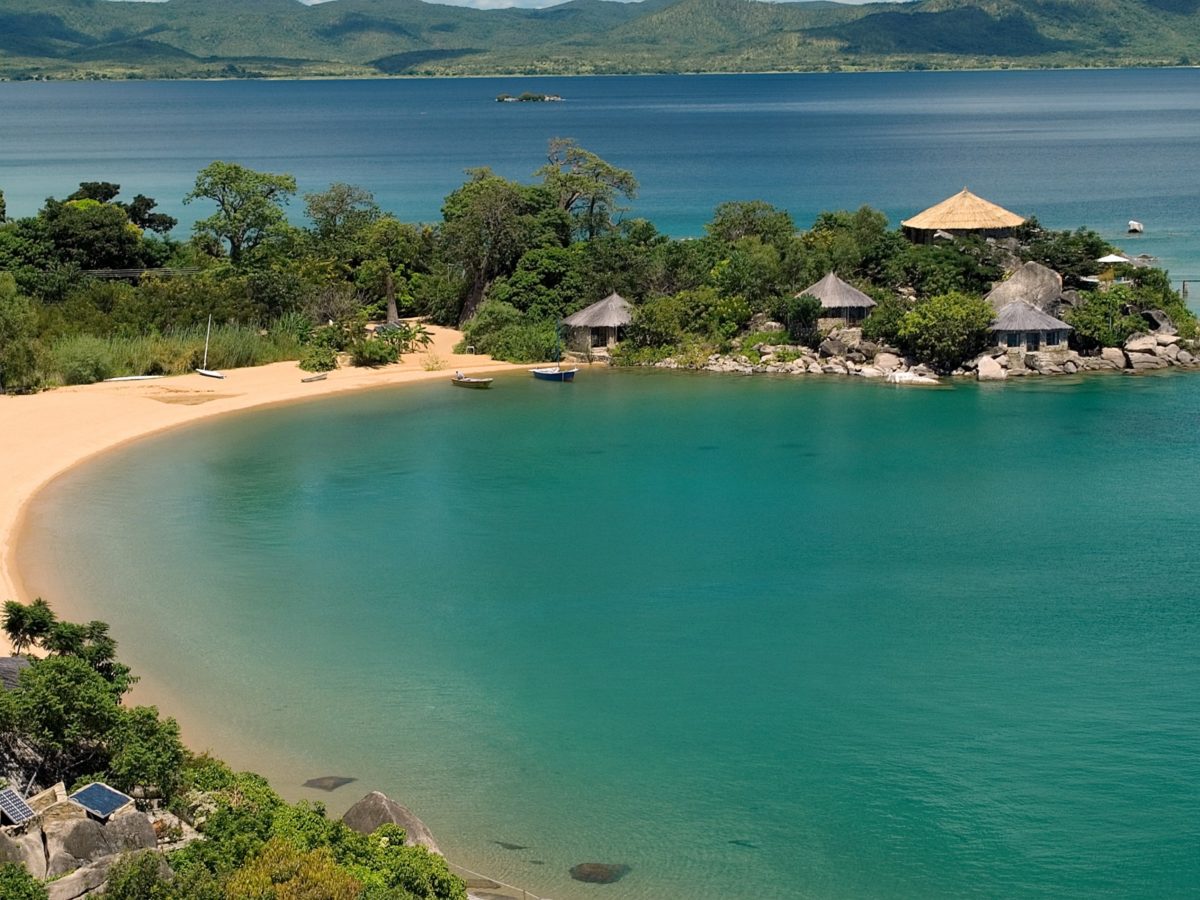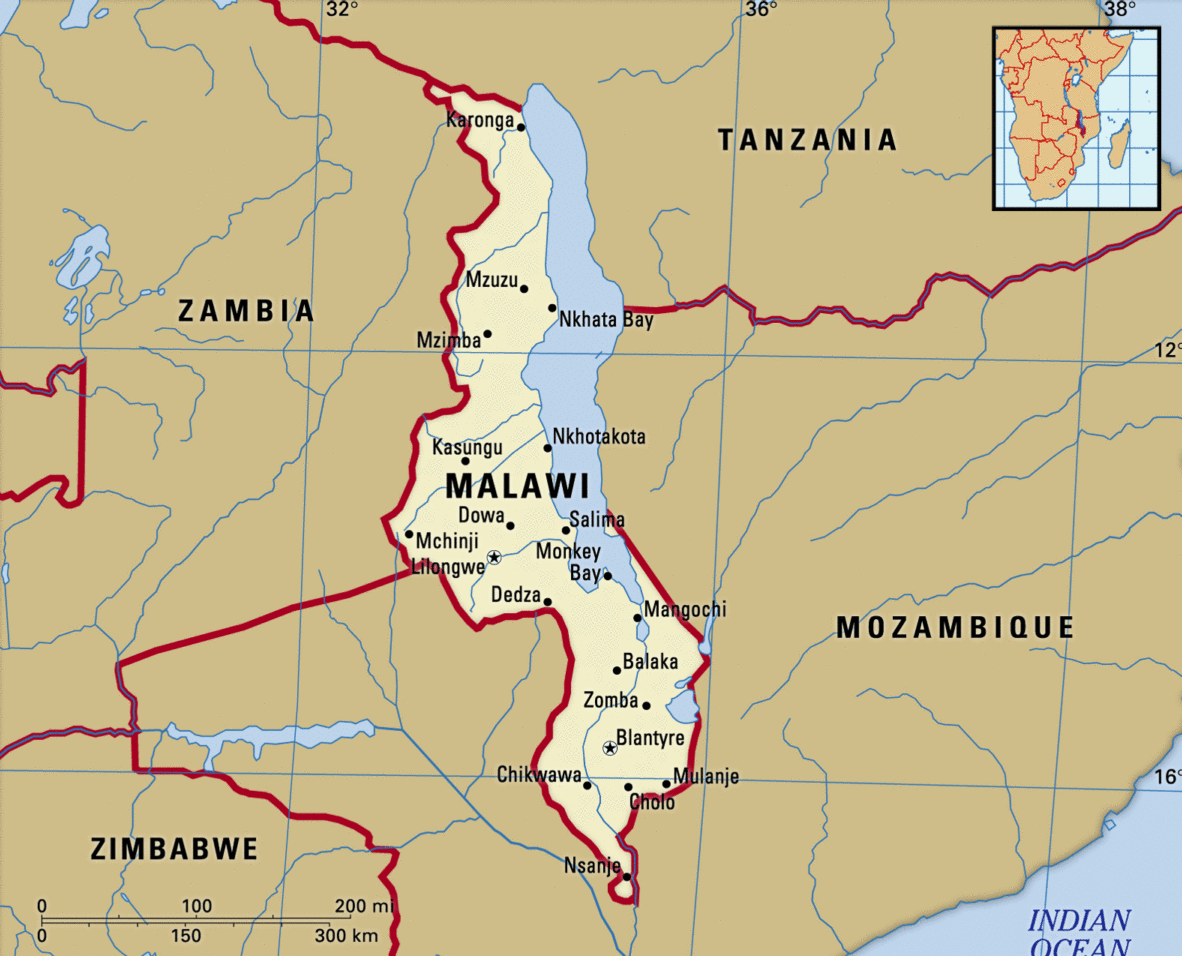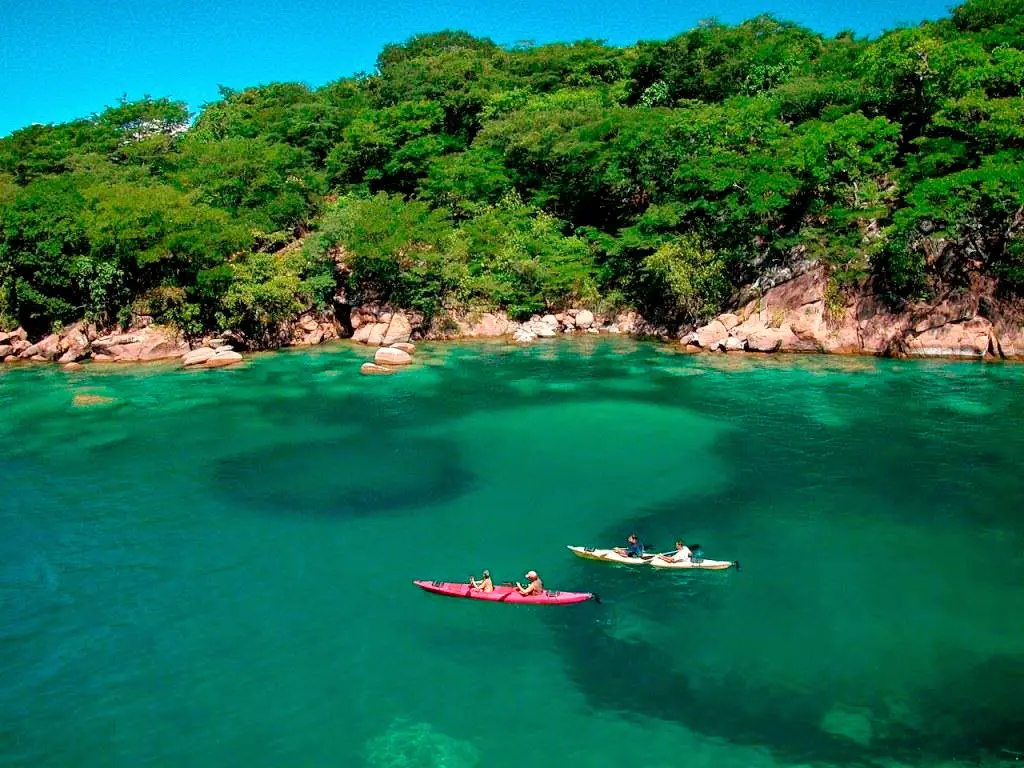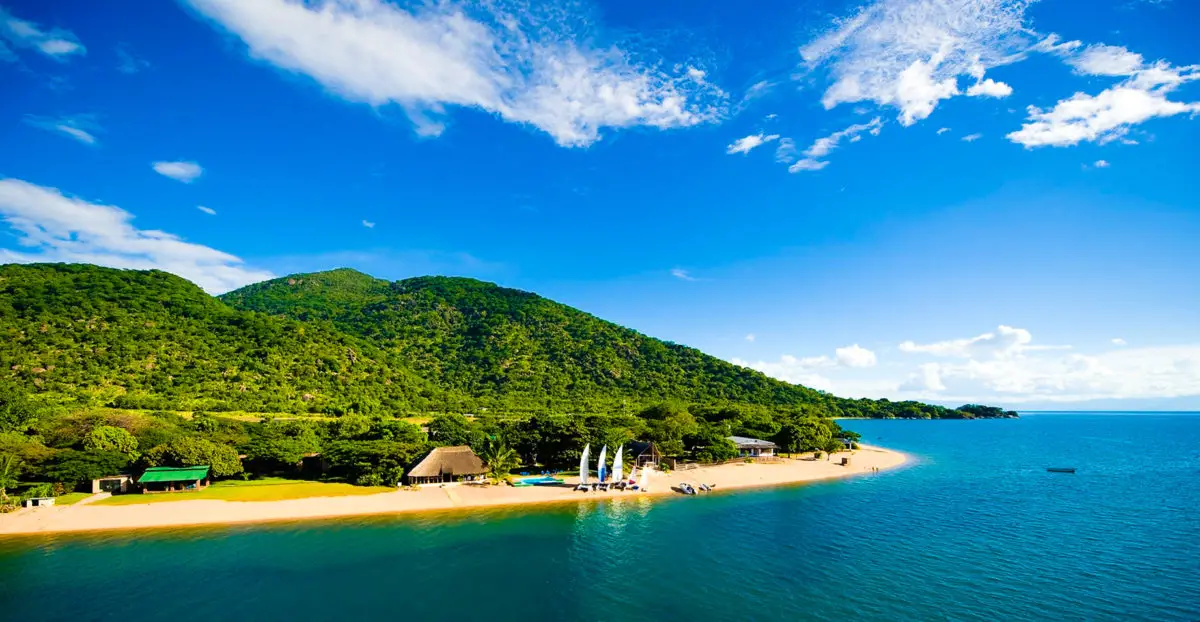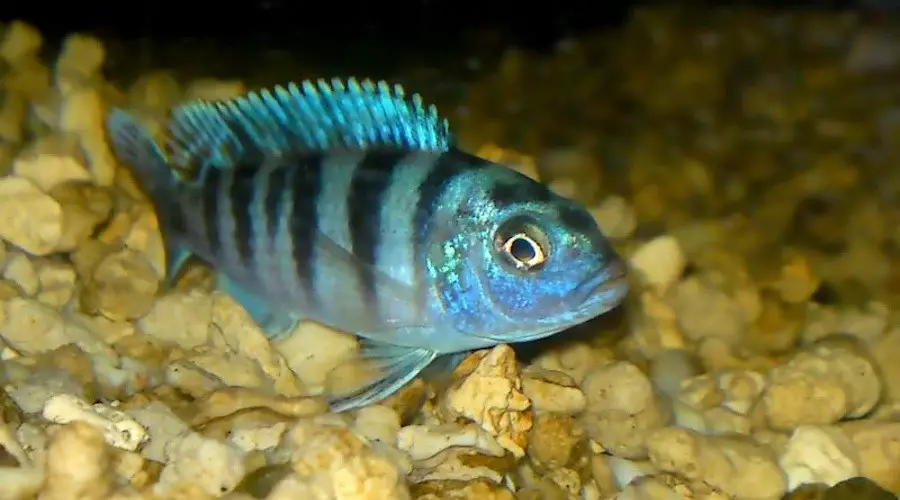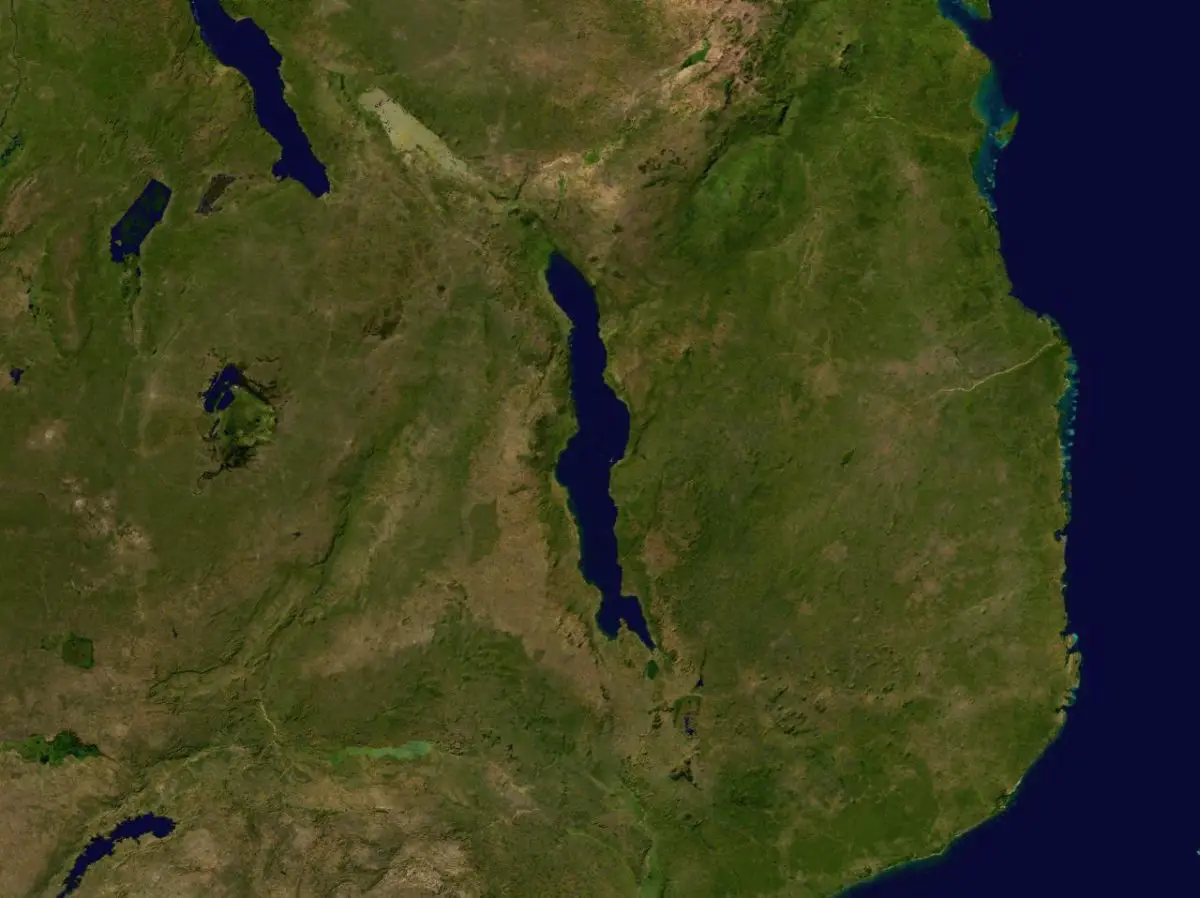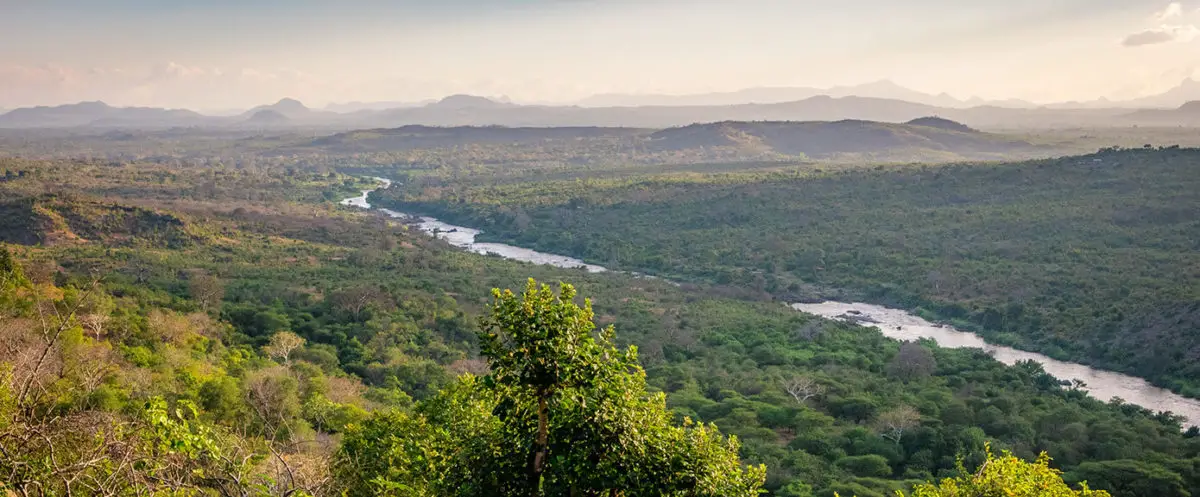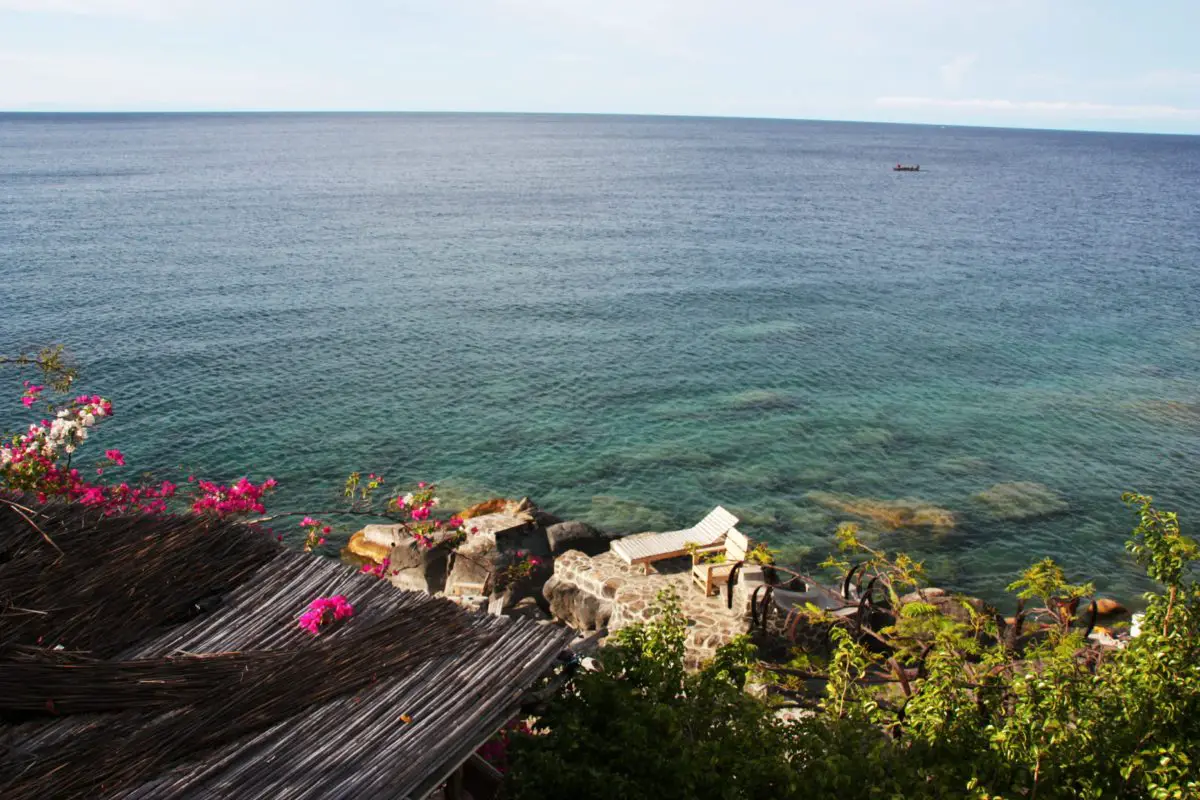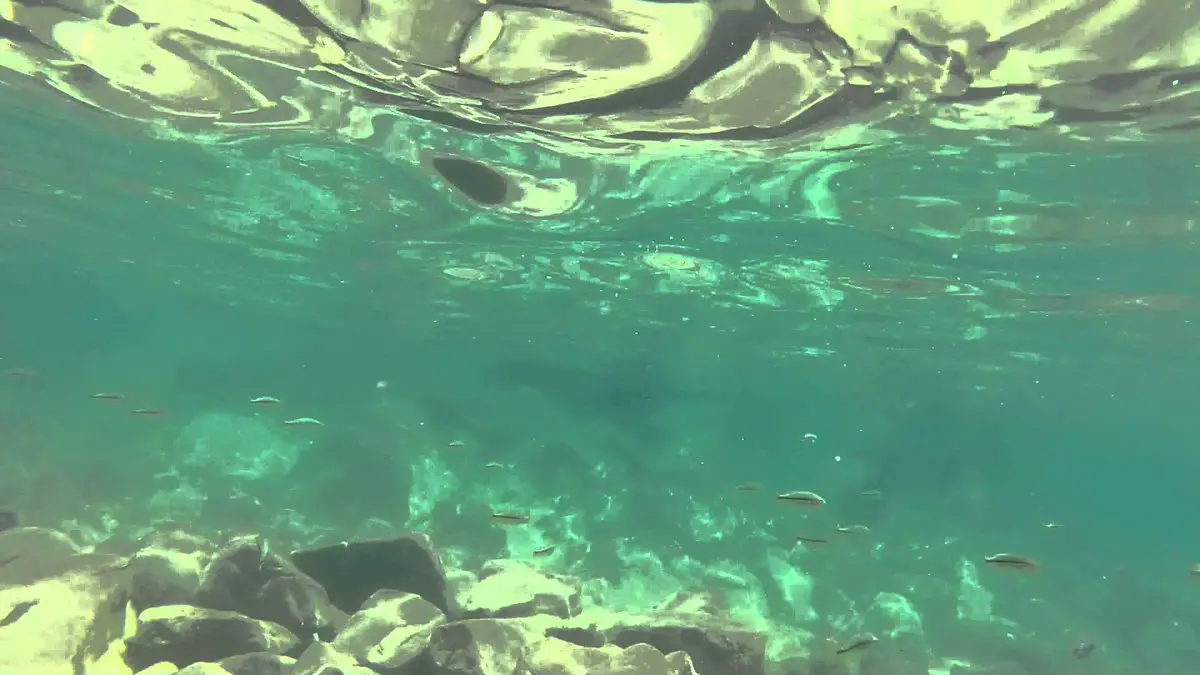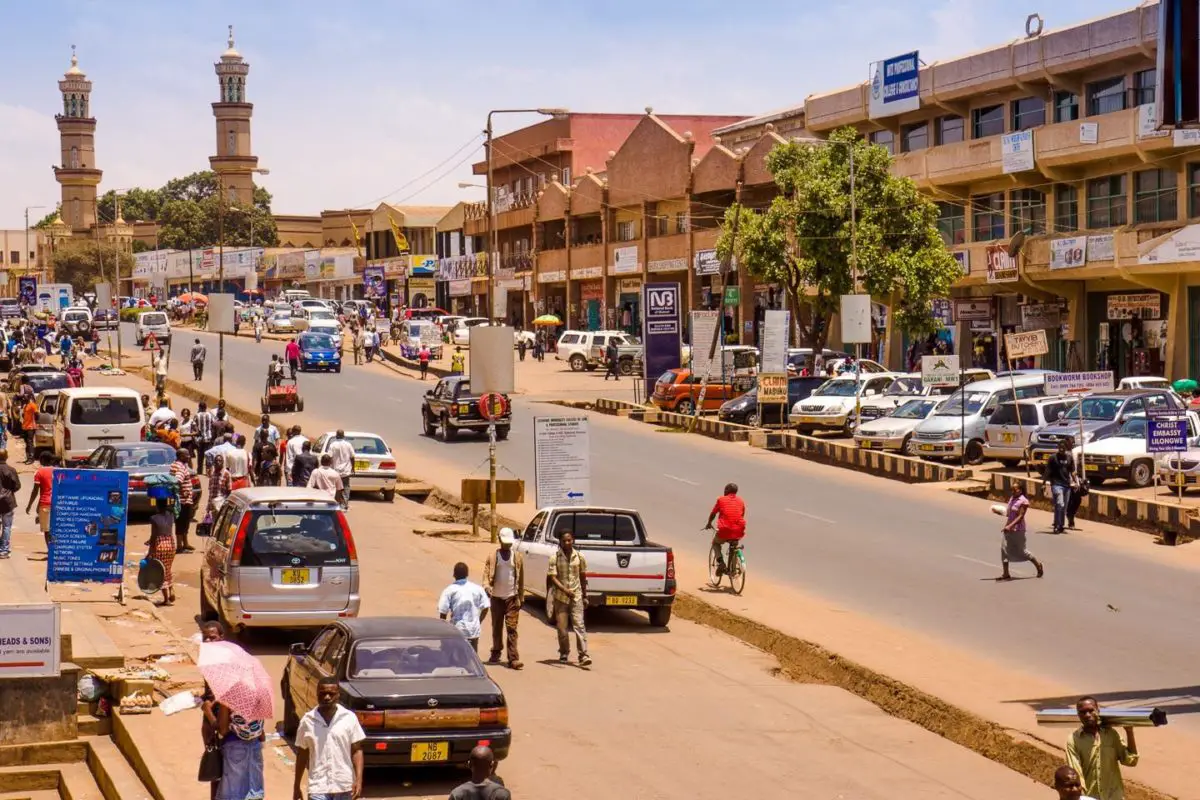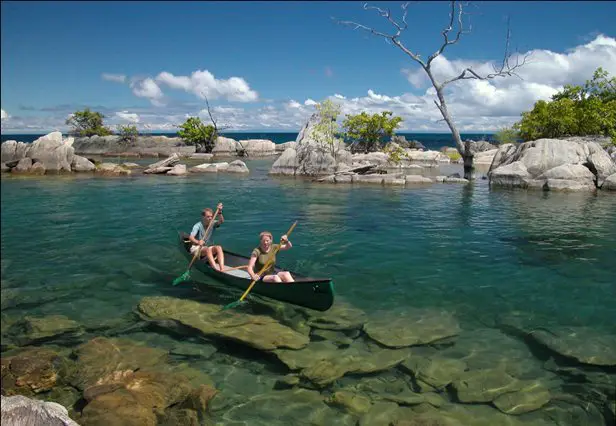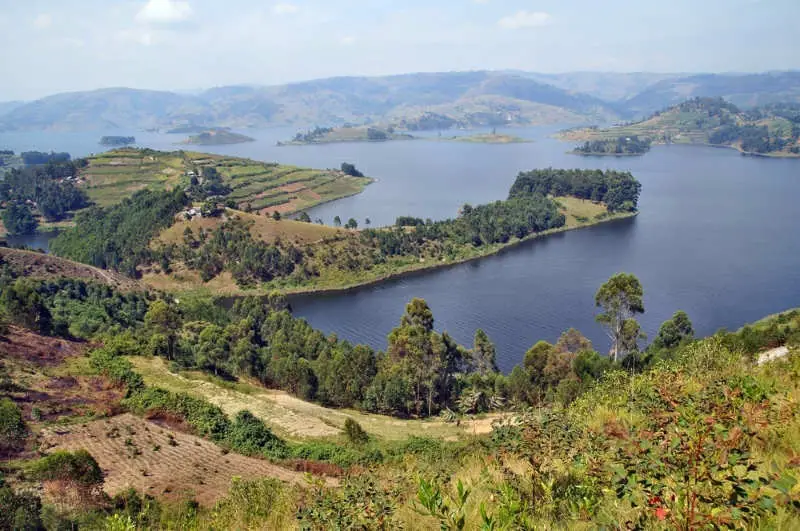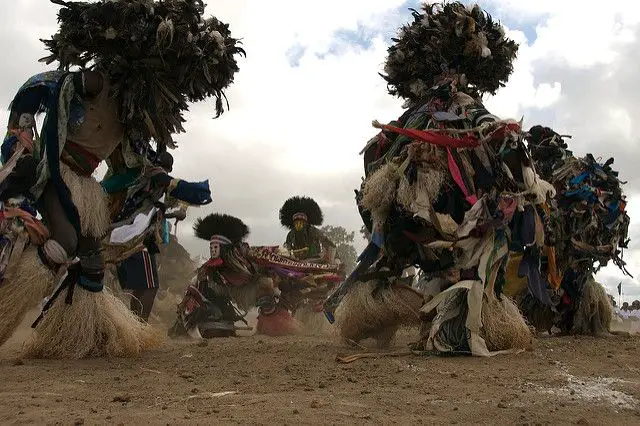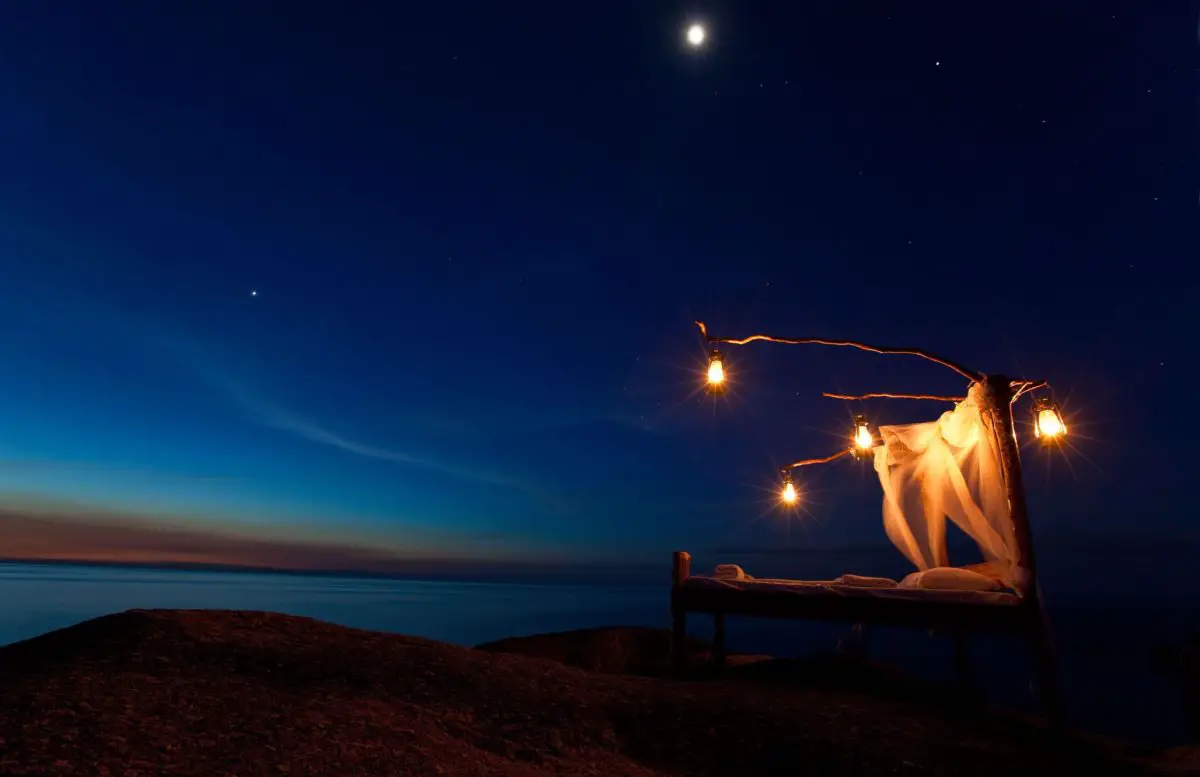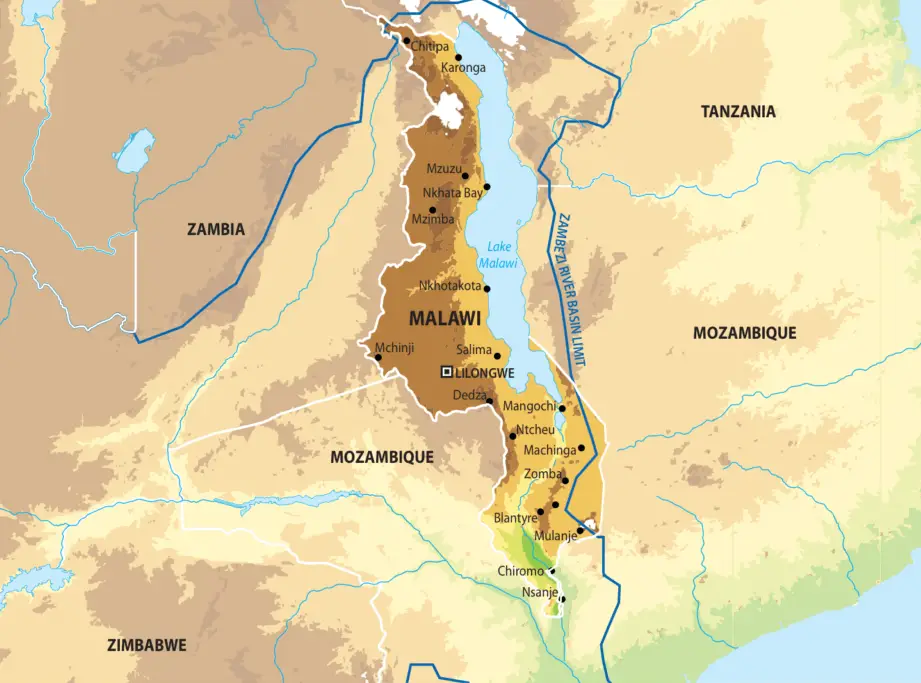Last Updated on September 6, 2023 by Hernan Gimenez
- Lake Nyasa is part of the Great Rift System, a geological rift and part of East Africa, a region also known as Malawi. In this article you will learn all about this lake and the national park where it is located, its history, characteristics, flora, fauna, geology and much more, don’t miss it.
Indice De Contenido
History of Lake Nyasa or Lake Malawi
Its history begins with the arrival of David Livingstone in 1859, when most of the lake was claimed as British Empire territory and became part of a colony called Nyasaland, created in 1907 as a British protectorate in Central Africa.
But the Portuguese also occupied the coasts to the east of Lake Nyasaland, taking the islands of Likoma and Chizumulu, all quite close to the coast of Mozambique. They were colonised by Scottish missions from Nyasaland and thus remained under British rule.
In 1914, Lake Nyasaland was the scene of a naval battle that led to the First World War, a confrontation that was the focus of that year’s war in Europe: the British attacked a German ship in the territorial waters of Tanzania, a colony under German rule but part of West Africa.
The lake’s borders have been disputed for years, and most of the lake’s border area is still disputed between Malawi and Tanzania. This is because the latter country claims that ownership of the lake’s border should be shared equally, as was the case with the German and British colonies before 1914.
Malawi, on the other hand, claims ownership of almost all of Lake Nyasa, including the waters off the coast of Tanzania itself. They base these claims on what was established by the British administration after 1919.
At that time, it was decided that the entire lake was under the power of British Nyasaland. This was to avoid a joint administration in which Tanzania wanted to participate, following the example of Lake Tanganyika.
Lake Tanganyika, by the way, is another of Africa’s great lakes, the second largest in the world in terms of volume and also the second in terms of depth, whose territory is shared by four countries, namely Tanzania, the Democratic Republic of Congo, Burundi and Zambia.
Lake Nyasa has at least a quarter of its surface area within the territory of Mozambique, a republic that gained independence from Portuguese rule, as well as the islands of Likoma and Chizumulu, which have an important influence on the territory of Malawi.
Characteristics
Lake Nyasa’s name translates as ‘the light shines on the lake’ or simply ‘the shining lake’. Much of its western border lies in the small but significant East African country of Malawi, which also has no outlet to the sea, making the lake even more important to its territory.
It also has territorial waters that are the domain of Mozambique, and at the same time the territory corresponding to Tanzania is under discussion.
It is 560 kilometres long and 75 kilometres wide, giving a total surface area of 29,600 square kilometres, and its shores belong to three countries: Malawi, Tanzania and Mozambique.
Among the characteristics of this lake, three main habitat types stand out, which can be seen in the following points:
- One habitat occupies 60% of the total surface of the lake, in which the presence of a sandy bed is observed, which contains plants, but sparsely.
- The other habitat represents 10% of the surface area and consists of rocky outcrops where, despite being a small bed, it is rich in fish but small in size.
- The last habitat type is considered to be an intermediate area, with a combination of the other two habitats mentioned above, where there is a mixture of sandy and rocky areas. In addition, in this habitat there are areas of the lake with greater depths, where it is possible for large fish to develop, which are generally predators of small fish.
Climate
Its climate has been defined as a tropical monsoon, with dry winters and characteristically humid summers. It has a rainy season that begins in mid-October or possibly early November, but lasts until the end of April.
All this makes its summer season very special, since it lasts from May to October, when the rainfall reaches levels of up to 1000 mm, especially in the valleys and with greater quantities in the mountainous areas.
The temperature in the hottest month, November, reaches 20 to 23 degrees Celsius in the mountains, but can reach around 27 degrees Celsius in the valleys. On the other hand, during the cold season, from July onwards, the temperature varies between 14 and 19 degrees Celsius.
Finally, it is important to note that in the mountainous regions around Lake Nyasa, there is some frost and the temperature can even drop below 0 degrees Celsius.
Flora, Fauna and geology
Lake Nyasa is considered one of the most attractive and beautiful places in Africa, with up to 500 species of fish found in its depths, 180 of which are endemic. It is also the source of 70 per cent of the freshwater fish that are sold to many aquariums around the world as exotic species, such as the vibrantly coloured cichlids.
Its flora and fauna live in an area that has been protected since 1980, when it was declared the Lake Malawi National Park, which has been a UNESCO World Heritage Site since 1984.
Its fauna includes the cichlids mentioned above, but there are also many molluscs, represented by some 28 species of freshwater snails. There are also crustaceans such as the endemic Malawi blue crab, many shrimps and representatives of the marine zooplankton with families of cladocerans, copepods and ostracods.
Its fauna is so diverse that it is not unusual to see Nile crocodiles, many hippopotami, vervet monkeys, baboons, wild boars and ospreys.
On the other hand, its flora is specially adapted to the maintenance of the entire ecosystem, which is why it has been the subject of studies by many ornithologists from all over the world. In this sense, it has the presence of African bushes, baobab trunks and many algae and plankton for the survival of its freshwater fauna.
In terms of geology, Lake Nyasa is located in East Africa and is the third largest lake in the Rift Valley, a well-known geological rift with a great diversity of fauna and flora, important elements for the economy of the surrounding regions, which use it for their fishing industry.
The studies carried out on this lake by the explorer David Livingstone made it possible to draw up a map of the lake and it was he who gave it the name Nyasa, although it was previously known as Lake of the Stars. On the other hand, it is worth mentioning that this explorer was a promoter of Christianity in the country of Malawi.
Its more specific geological details are due to its location in the Rift Valley, part of a rift in this area that is more than thirty million years old, as a result of a tectonic plate that split in two; place where the lake is about two million years old.
According to theories, its chemical composition is the result of the possibility that the lake dried up completely at some point in its life. Its perimeter is formed by a series of shorelines and it is a lake that can reach a depth of 704 metres in its northern part, where the forested regions of Livingstone exist.
It is fed by 14 rivers, of which the Ruhuhu River is one of the largest, as well as the Shire River. The following is a brief description of these rivers:
Ruhuhu River
Located in southern Tanzania, part of the eastern region of Africa, the river rises in the Livingstone Mountains, known locally as the Kinga Mountains. The river is 160 kilometres long and flows from south-east to south-west before emptying into Lake Nyasa.
Shire River
This is a river located on the southern shore of the lake, with a course of about 402 kilometres, considered to be the only outlet of Lake Nyasa, and after its course it joins Lake Malombe, located in the south of the country of Malawi.
Islands of the Lake
The islands in Lake Nyasa are identified as Likoma and Chizumulu, both of which are part of Malawi and will be discussed in more detail below:
Likoma Island
Likoma Island is the largest island in Lake Nyasa, at 7.7 kilometres long and 4 kilometres wide, with a total area of 18 square kilometres.
The island is heavily populated and even has an airstrip in its main town, Likoma, as well as a number of architectural structures dating from 1903 and 1911.
One of the island’s most outstanding features is its large number of baobab trees or bottle trees, also known as monkey bread, of which there are about six species known to occur specifically in the region.
It also has other islands such as Jalo Reef, Otter Point, Mbenji, Pompo Rocks, Thumbi West, Crocodrile Rocks, among others.
Chizumulu Island
This island has an area of 3 square kilometres, with a length of 4.5 kilometres and a width of 2.4 kilometres. This island is also inhabited and is part of Lake Nyasa, which corresponds to the Likoma district, close to the territorial waters of the country of Mozambique.
These islands belong to Malawi rather than Mozambique because they were colonised by British missionaries, while Mozambique was colonised by the Portuguese.
According to a 2009 census, the island’s population was around 3,000, and it is important to note that food is imported from the mainland, although there are many cassava plantations on the island. On the other hand, electricity supply is intermittent, and the size of the island means that only one road runs through it.
Water composition
The waters that make up the bed of Lake Nyasa have an approximate alkalinity of 8.6 pH points, which is below the levels of Lake Tanganyika mentioned above. On the other hand, their GH values, which correspond to water hardness, are quite high in relation to the recommended measure, calculated between 10 and 14, which indicates the presence of dissolved concentrations of magnesium and calcium.
With regard to the KH value, where potassium hydride is present, the lake has water levels between 8 and 10, which represent quite adequate limits for the African biotype.
This lake also has water temperatures that generally remain between 24°C and 29°C, although this level varies according to depth, where it becomes more homogeneous and is usually of the order of 22°C.
Lake Nyasa National Park
Lake Nyasa National Park is located in the Mangochi district of southern Malawi and Salima district of central Malawi.
The park covers an area of 9,400 hectares, including the Nankumba Peninsula at the southern end of the lake, around a dozen islands, mountains such as Mwenya and Nkhudzi, and the entire water area formed by 100 metres of shoreline.
It has been a national park since 1980, with all its forest reserves and even many of its islands protected since 1934.
In this sense, it has a large number of representative species of flora and fauna, including the continent’s large mammals such as rhinoceros, elephant, leopard, lion and buffalo. The park is home to 170 species of mammals and 600 species of birds.
Scuba diving is popular in this park to see the variety of fish, especially at Cape Maclear, a nature reserve on the Nankhumba Peninsula.
Dispute over the Lake’s boundaries
Lake Nyasa is the subject of a number of disputes over the ownership of its territory, which has become a source of controversy.
Tanzania and Malawi recognise the borders with Mozambique, but since independence Malawi has claimed that the entire lake belongs to it, including the Tanzanian shore. Malawi is trying its best to have the territorial boundaries reconsidered in order to move the border between the two countries to the middle of the lake, thus creating a fair division for both nations.
This is a dispute that has been going on for several decades and affects more than two million people whose livelihoods depend on the lake’s resources, whether for transport or food, and who are the most affected and who are waiting for a fair solution to the conflict.
However, this seems increasingly unlikely, especially given the suspicion that there may be oil deposits in the depths of the lake, which has strengthened Malawi’s desire to keep the lake entirely to itself, and has turned the conflict into a traditional economic rather than territorial one.
The conflict is still under negotiation, and between 2012 and 2014 complaints were lodged against Tanzania for allegedly threatening Malawian fishermen going about their daily business on the lake.
It remains to be hoped that the consciences of these two nations will be wise enough to sit down together and reach a mutual agreement that will benefit all concerned. The country is big enough and has resources that can be shared equally among all its inhabitants, who are human beings with the same needs.
Surrounding cities
Lake Nyasa is surrounded by a number of towns that use its beauty and resources to provide for the basic needs of its inhabitants. Some are more important than others, but all contribute to the urban and economic development of Malawi.
Some of the towns that make up the Lake Nyasa area include:
- Lilongwe is Malawi’s capital city and largest metropolitan area. It lies to the south-west of Lake Nyasa.
- Mzuzu, located west of Lake Nyasa, is part of Malawi.
- Mbeya, a town located north of Lake Nyasa and belongs in Tanzania.
- Songea, a town in the eastern region of Lake Nyasa, also a Tanzanian territory.
- Lichinga, a territory of the country of Mozambique, lies to the east of Lake Nyasa.
- Zomba, is located south of Lake Nyasa and is part of the territory of Malawi.
Lake Nyasa Attractions
Lake Nyasa is located in a magical country in the heart of Africa, which has countless attractions for travellers, many of which are unknown. In this respect, Malawi has areas such as Lake Nyasa, surrounded by natural parks and incredible wildlife, making it the ideal place for those who want to get away from it all.
Despite being a landlocked country, this lake is an inland sea with fine sandy beaches and crystal clear waters where you can enjoy a wide range of water sports including kayaking, sailing, diving or simply water skiing.
These activities can also be complemented by cruises and sport fishing, although to get to the beaches the traveller will have to take a detour off the main roads.
In terms of accommodation, there are good options all around Lake Nyasa or Malawi, many of which are close to places of interest such as Lake Malawi National Park, a World Heritage Site, located on the island of Likoma, where you can visit the cathedral built during the time of the missionaries, as well as the stunning beaches of Chintheche, north of the lake.
In the northern part of the country, the Nyika National Park covers an area of 3,200 square kilometres and includes a granite formation unique in Africa, a large freshwater reservoir and 200 different species of orchids.
In this park you can take a variety of walks, either on foot, bicycle, jeep or horseback, and along the way you can see antelopes, leopards, zebras and many other species of its diverse fauna.
To the south of the lake, there are also important examples of flora and fauna that form part of the famous Majete Reserve, protected by Africa Parks, whose visits help to maintain and conserve this park, which is home to leopards, elephants, rhinos, buffalos and lions, five great species that nature offers us.
To the extreme south is the Mwadvie Nature Reserve, small and difficult to access, but with many attractions such as the mountain known as Mount Mulanje, 3,000 metres high, with incredible views of the lake, and the Zomba Plateau, characterised by forests of pine, cypress and cedar trees.
We invite you to get to know and enjoy Lake Nyasa as well as its representative tribes, identified as the Yao, Nyanja or Marvis and the Chewa, who are very hospitable and willing to offer all visitors samples of their art, dance or music. We therefore recommend that you do not miss out on enjoying this wonderful African lake.
Curiosity The Lake of the Stars
David Livingstone was a Scottish missionary doctor who explored much of Africa and in 1859 discovered Lake Nyasa, which he nicknamed the “Lake of Stars” because he was amazed by the clear skies he observed over the lake at night.
This wonderful phenomenon was also aided by a type of lantern used by the locals to illuminate the lake, all of which captivated Livingstone during his discovery.
Today, there is a luxury resort called Pumulani Lodge on the southern shore of the lake, where a telescope has been placed on a rocky outcrop above the water, so that all visitors have the opportunity to gaze at the star-filled sky.
It is said that whether it is the constellations, the stars or the lights of the fishermen’s lanterns, every night on the lake is illuminated, making it one of the places not to be missed.
Map of Lake Nyasa
Below is a map showing the exact location of Lake Nyasa or Malawi on the African continent, which forms part of the territory of the countries of Malawi, Tanzania and Mozambique.
If the information found in this article has been to your liking, we invite you to discover more through the following links:

